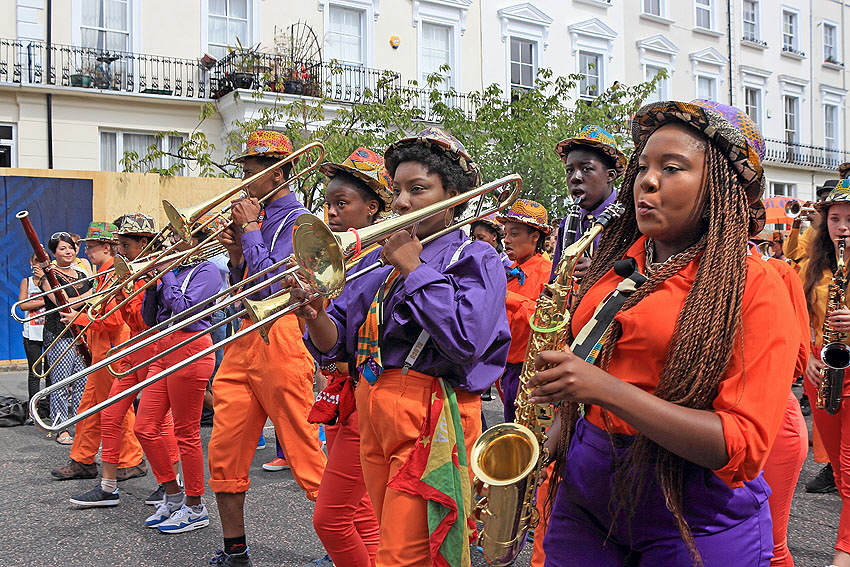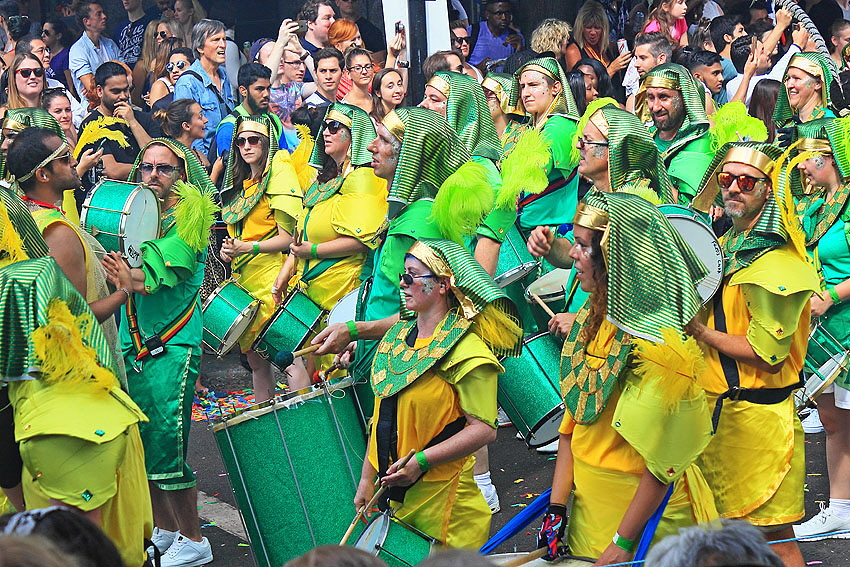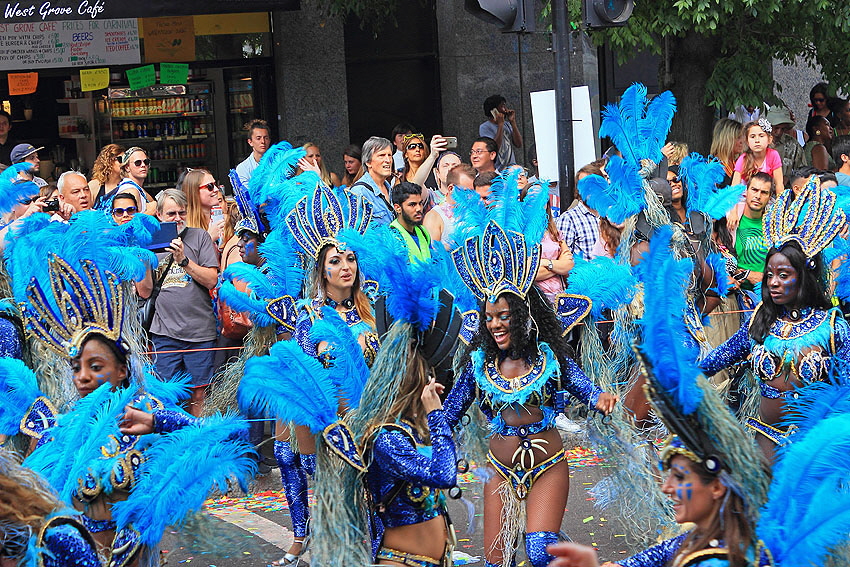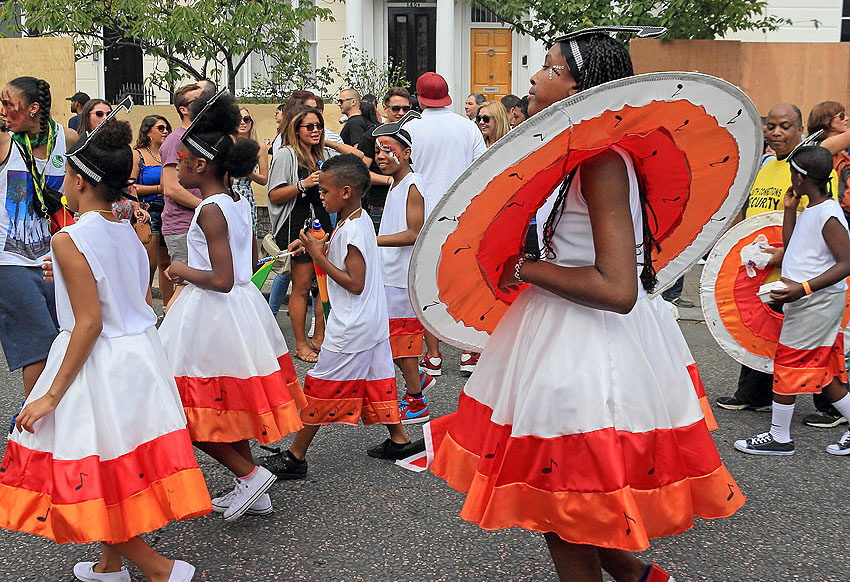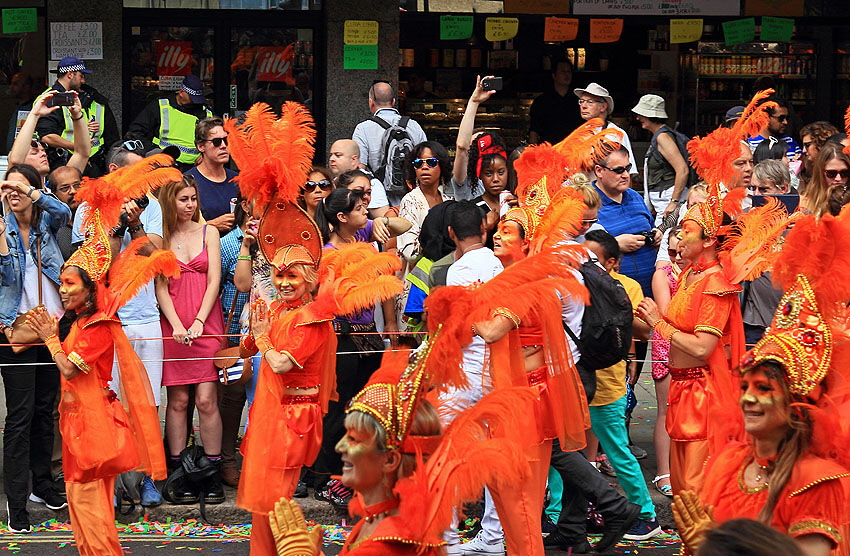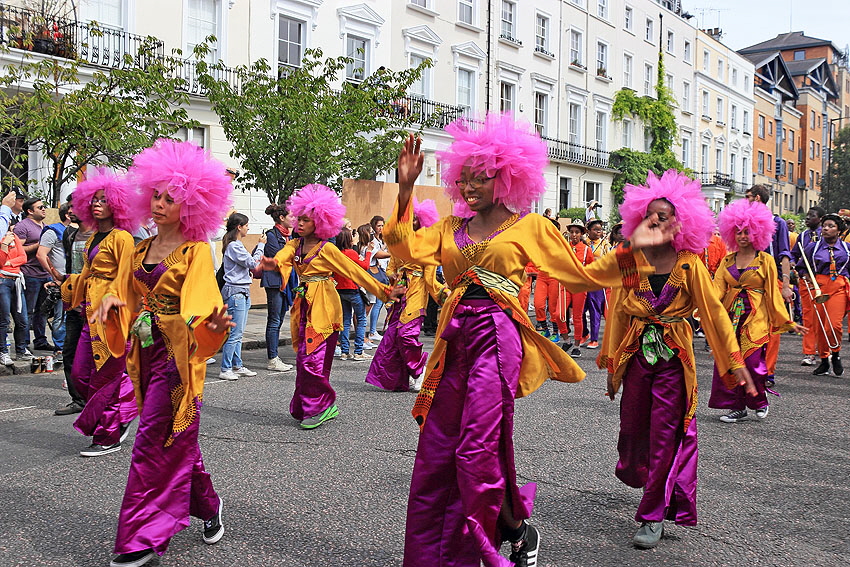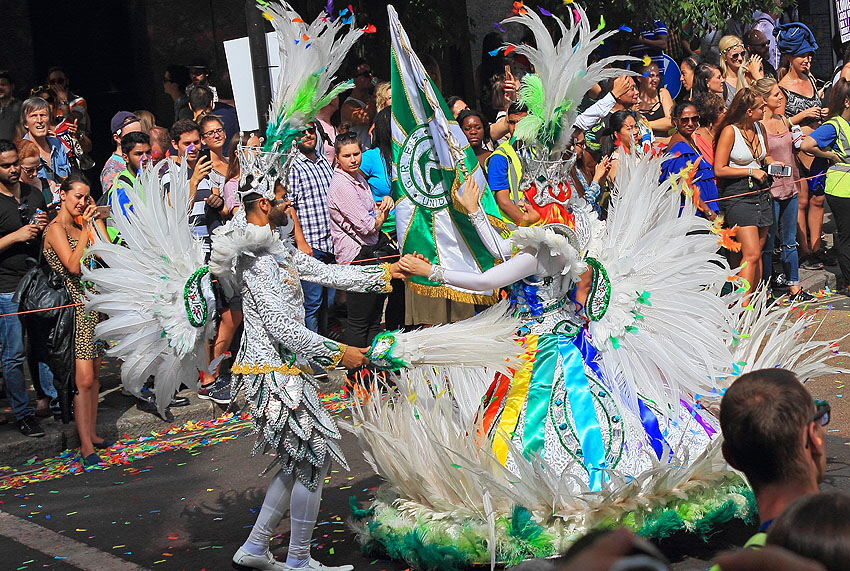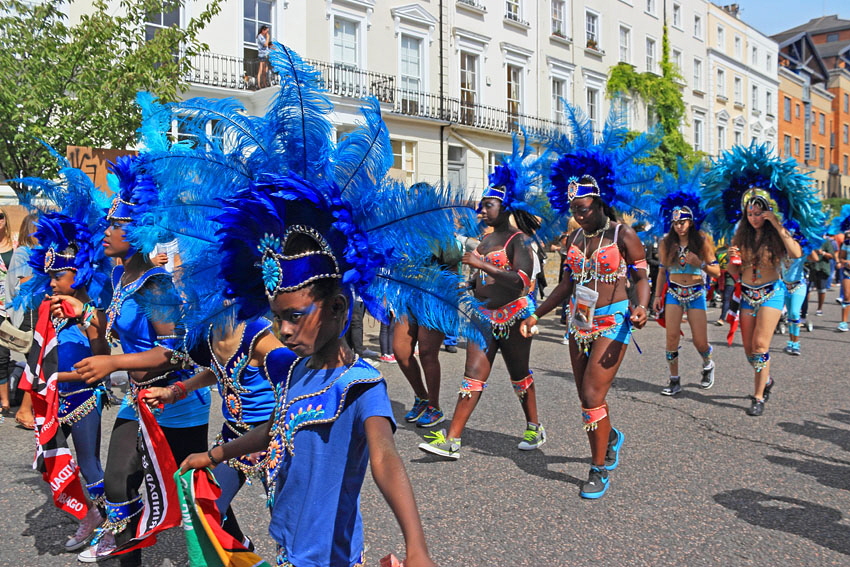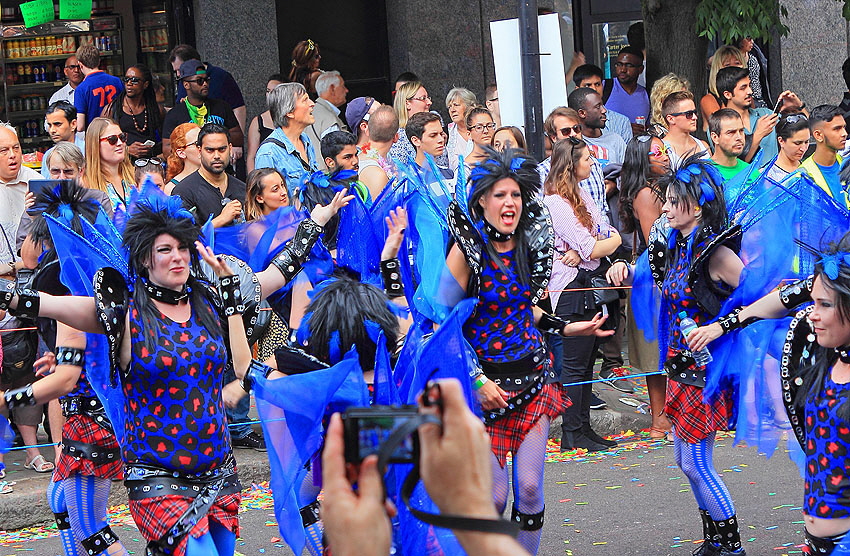‘Carnival is about transformation
and having the freedom
to express who you are’
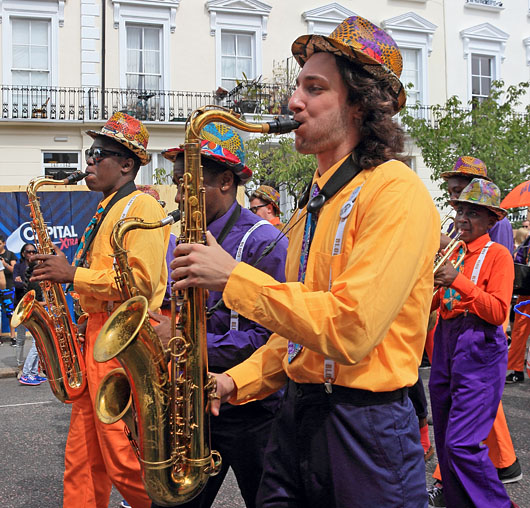
It’s the last week in August. The sun shines down on thousands of revellers and the streets vibrate to the sounds of steel bands, calypso, reggae and ska (a blend of soul and calypso). The air is heavy from the smoke of a dozen barbecues and there’s an appetising aroma of goat curry, jerk chicken and spicy Jamaican patties. It could be Kingston or Port of Spain, but those police helmets and uniforms are a dead give-away. In fact it’s carnival time in London’s Notting Hill.
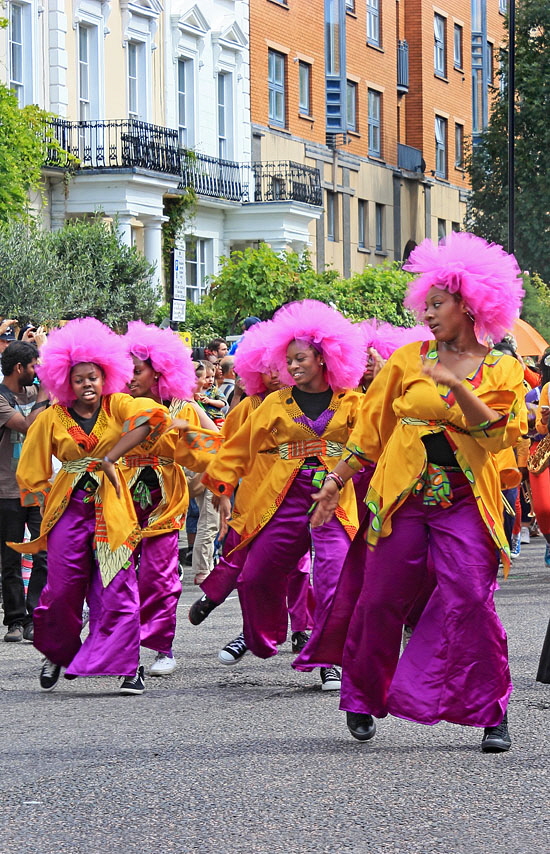
Sweet taste of the Caribbean
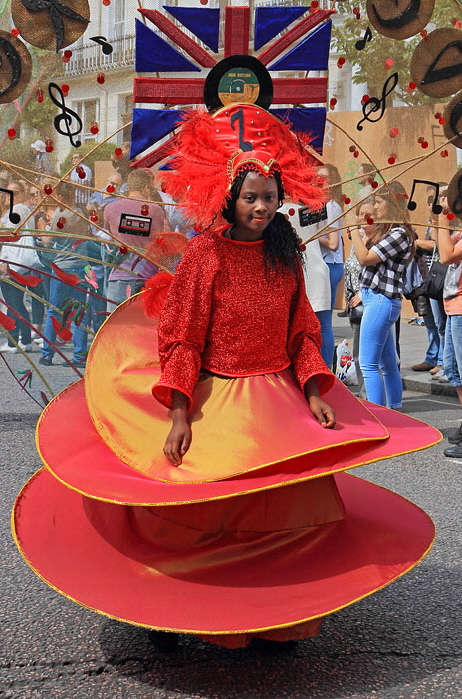
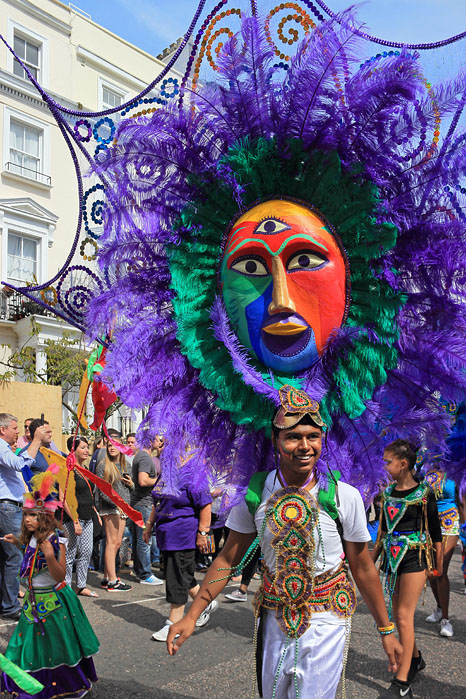

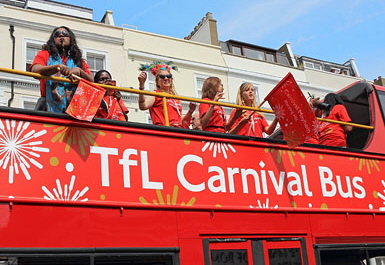
The Notting Hill Carnival is the largest contemporary street festival in Europe and the biggest carnival anywhere in the world outside Rio.
Like so many great events, it had humble beginnings. Its roots go back to 1959, when a fair was held at which 500 people danced and sang in procession behind one solitary steel band. Three years later, journalist Claudia Jones, founder of the West Indian Gazette, was responsible for the first organised event - a small celebration for a few homesick Caribbeans’. Later, she was joined by activist and community worker Rhaune Laslett who became the principal organiser of the event which moved on to the streets around Ladbroke Grove in Notting Hill, and Carnival was born.
By the mid nineteen seventies, the annual event had become definitely Caribbean in flavour, with around 150,000 people attending. But by 2016, when the Golden Jubilee of Notting Hill Carnival was celebrated, it attracted nearly two and a half million people, making it one of the world's largest street festivals. Sadly, in 2020, due to the pandemic, the event had to be cancelled, but free live-streamed events were shown online.
Since those early days, Carnival London-style has grown to encompass much more than Caribbean culture. Adults and children, everyone from European, Latin and Asian participants, to the London School of Samba can and does take part.
Though the festival now embraces a variety of ethnic groups, the three aspects that make the Carnival uniquely Caribbean - pan (steel drums), mas (masquerade) and calypso are still essential ingredients. As one mas-designer said “masquerade represents the creative side of the Carnival. It’s about transformation and having the freedom to express who you are”.
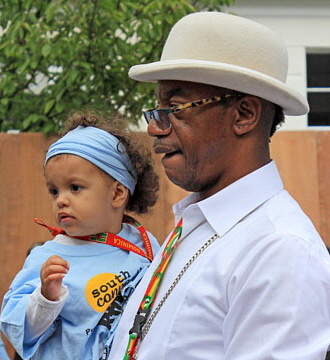
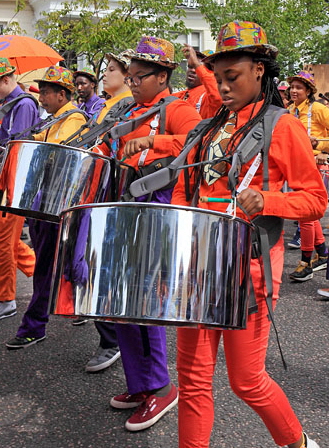
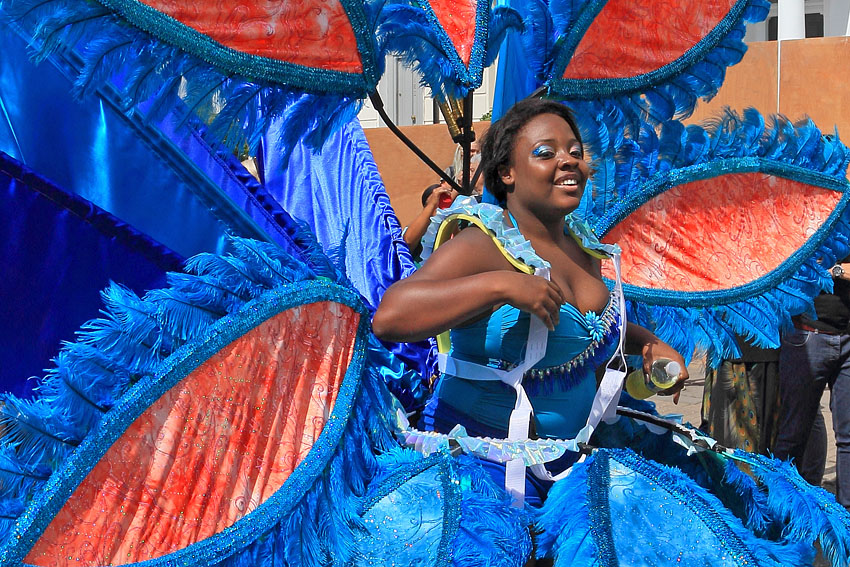
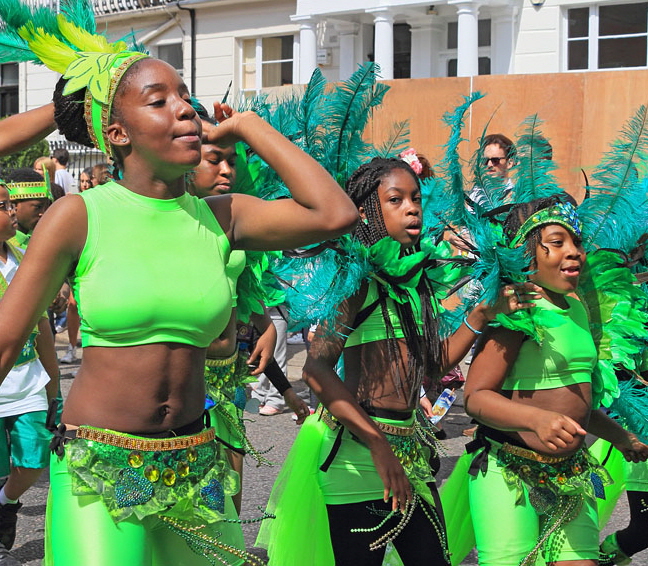
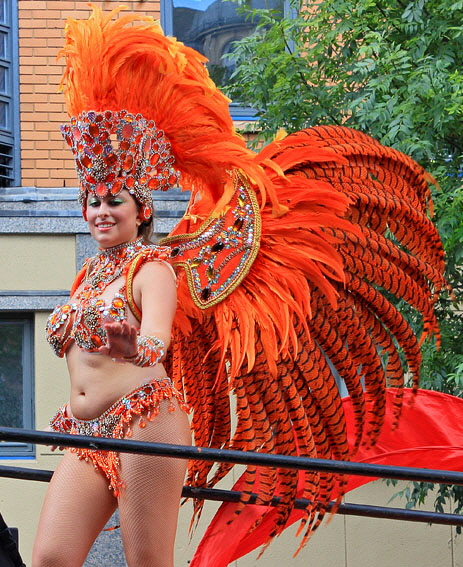
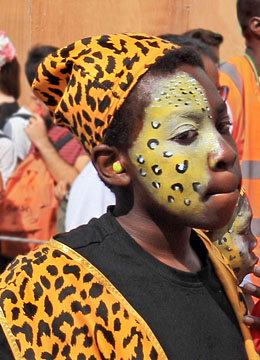
If masquerade is the heart of Carnival, then calypso is the soul. Once, reigning calypso monarch ‘Lord Cloak’ (aka Errol Brown) has won the title seven times. Born in Trinidad, the land of calypso, his songs cover a wide range of topics and can be about anything that affects people’s lives, be it falling in love or economic recession.
Steel band player, Pepe Francis, has also had a long association with Carnival, first as a mas artist and later as the leader of Ebony Steel Band. For him, as for other participants, the event represents the culmination of a whole year’s work and anticipation.
The distinctive metal sound of steel bands which has become so much a part of Carnival is, in musical terms at least, quite new. The drums themselves, which are made from old oil drums, were first played in Trinidad in the 1940s where they were used at the beginning as fairly crude percussion instruments.
Today’s bands are made up of six or eight different drums of varying sizes, each finely tuned to produce up to 30 individual notes. The drums are played using rubber-headed pan sticks which give the sound its muted mellow tone.
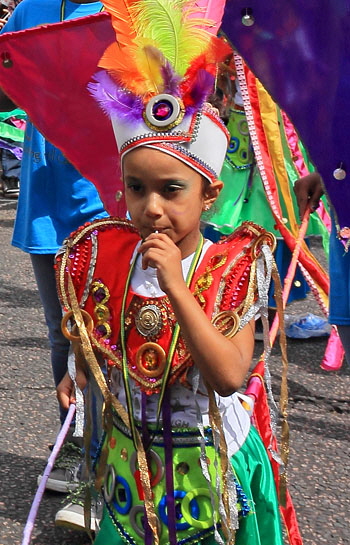
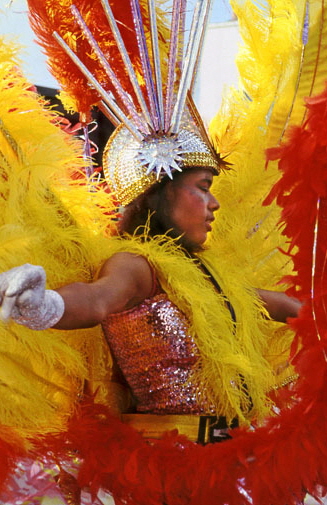
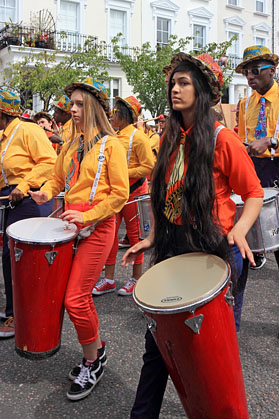
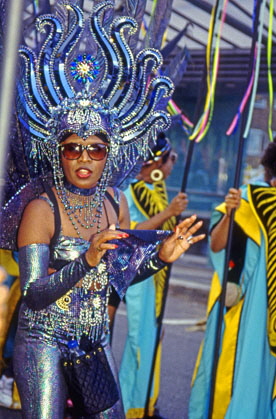
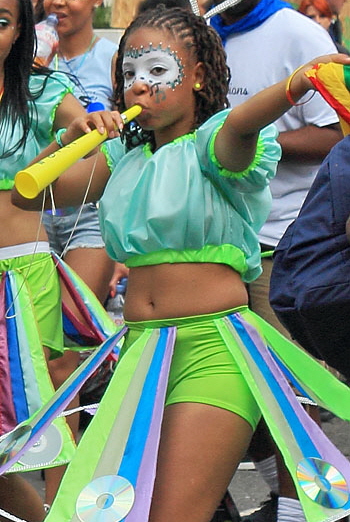
Preparations for the two day festival reach a final frenzied climax the week before the event, as competitions take place to find the best steel pan and soca bands, along with a contest in which the winning masquerade artists are crowned Carnival
King and Queen.
Win or lose, Carnival is about taking part. The undoubted highlight of Notting Hill’s two-day party of ‘jump up’ is the carnival parade. With more than 150 costume floats, a dozen steel bands and around 30 sound systems, it stretches for over three and a half miles. Each float, which is essentially a decorated truck, adopts a chosen theme which the dancers and mas artists on and behind the float interpret with their dress of perhaps more appropriately their overdress. Inevitably one float bunches up too closely to the next, the sound of the music merges and their dazzling costumes become a kaleidoscope of colour and noise.
In and around the processional route, another 50 static sound systems blast out soca and reggae, while around 400 food stalls serve up everything from rice’n’peas to jelly coconut rum cake.
Sunday, which is ‘Children’s Day’, is slightly less crowded, and is the best day to visit. Finding a good place along the three mile parade route can be difficult. But coming early, and staying firmly at your spot, is probably the best way to ensure you will get a good view. Even if you don’t, mingling with the crowds, stepping in time to the rhythm and the beat, and indulging in mouth-watering Caribbean street food, is all part of the enjoyment.
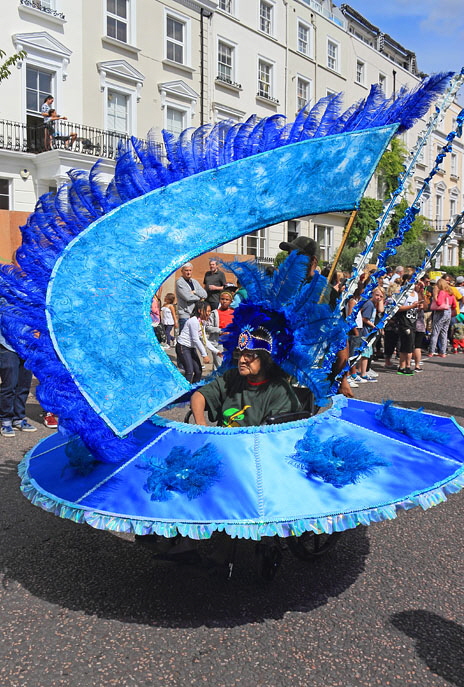
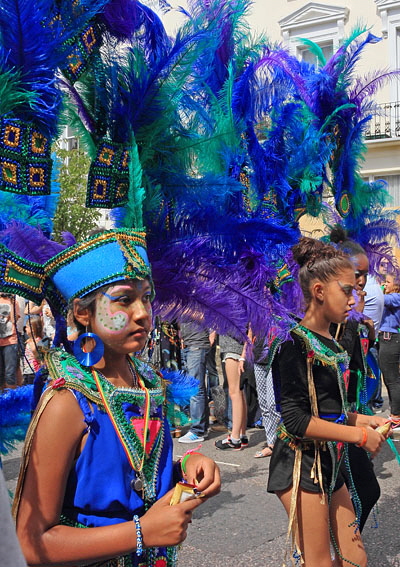
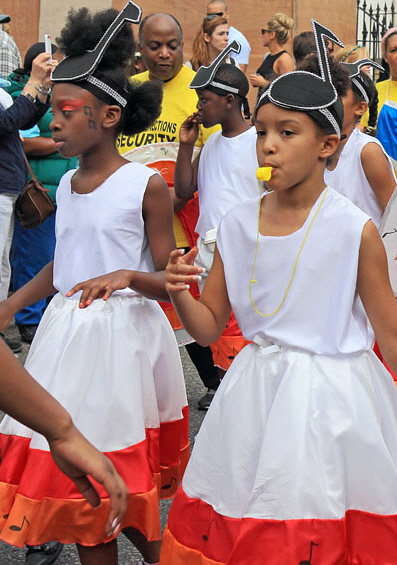
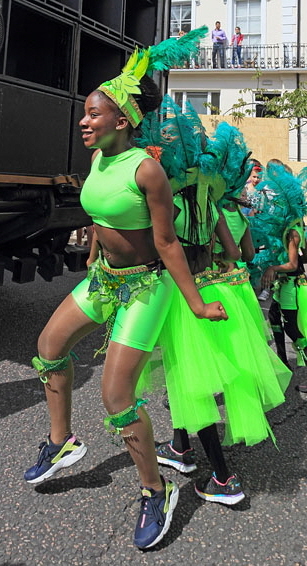
Advice for would-revellers? Dress up, act up and have a great time.
A whistle is an essential accessory - don’t worry if you haven’t got one, there are thousands on sale. Fun is guaranteed. The only thing that can’t be relied upon is the British weather.
Finally - coming back next year? Preparations for the following year’s carnival begins almost immediately once the present celebrations are over, with mas-makers, designers and musicians all putting their creative minds into action.
12 images here ©JAYTRAVELPHOTOS
© COPYRIGHT notice. The images on this site are for viewing only.
To purchase any, for personal or commercial use, please contact us at jaytravelphotos@aol.com

